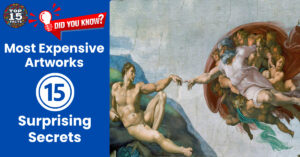Introduction
The Renaissance was a time of breathtaking art, scientific breakthroughs, and a renewed fascination with classical knowledge. But beneath the surface of this cultural rebirth lies a world of the unexpected. From peculiar beauty standards to practices that seem shocking to us today, the Renaissance was full of surprises. Get ready to have your understanding of this fascinating era turned upside down!
Top 15 Surprising Renaissance Facts(One Line)
- Pale skin was considered the height of beauty.
- People used dangerous methods to achieve a pale complexion.
- Unicorns were widely believed to be real.
- Forks were seen as an unnecessary luxury and even blasphemous.
- Renaissance football was more like a street brawl than a sport.
- Artists dissected corpses to understand human anatomy.
- Wealthy people sometimes kept dwarfs as a status symbol.
- Marriage was often a business arrangement rather than a love match.
- Infant abandonment was a tragically common practice.
- People used harsh methods like filing down teeth and acid for teeth whitening.
- Professional mourners could be hired to cry at funerals.
- The Church sometimes put animals on trial for crimes.
- Surgery was often performed by barbers, not doctors.
- Belief in magic and astrology was widespread, even among intellectuals.
- Leonardo da Vinci designed a tank centuries before they were used in warfare.
1. Pale skin was considered the height of beauty.
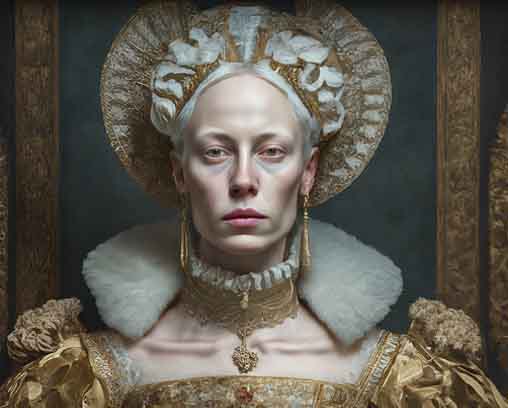
In the Renaissance, a pale complexion was the ultimate symbol of wealth and status. It signified that you didn’t have to labor outdoors in the sun, a mark of the lower classes. Women went to extreme lengths to achieve this look, using harmful concoctions containing lead, arsenic, or even resorting to bloodletting.
2. People used dangerous methods to achieve a pale complexion

Renaissance beauty standards were not for the faint of heart. Women applied thick layers of white makeup, often made with lead, which could cause serious health problems. Other methods included using creams containing mercury or even deliberately bleeding themselves to achieve a sickly pallor.
Read More Top 15 Facts about Taylor Swift
3. Unicorns were widely believed to be real
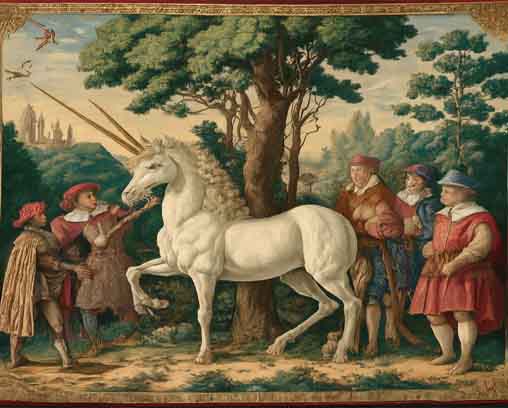
Today, unicorns are creatures of fantasy, but in the Renaissance, they were believed to be real animals. “Unicorn horns” (often narwhal tusks) were prized for their supposed healing powers and ability to detect poison. This belief demonstrates the blurry line between science, myth, and superstition in the Renaissance mind.
4. Forks were seen as an unnecessary luxury and even blasphemous.
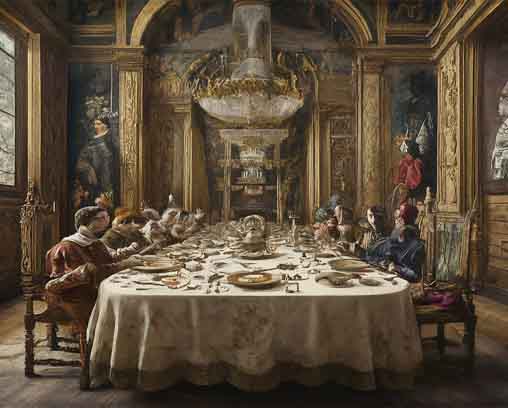
It took a surprisingly long time for the humble fork to become a standard dining utensil. In the Renaissance, most people ate with their hands and a knife, perhaps with a spoon for soups. Forks were seen as pretentious, associated with the Devil (due to their spear-like prongs), and some religious figures argued they were an insult to God, since He had provided us with perfectly good fingers!
Read More 15 Astonishing Facts About the Human Body
5. Renaissance football was more like a street brawl than a sport.
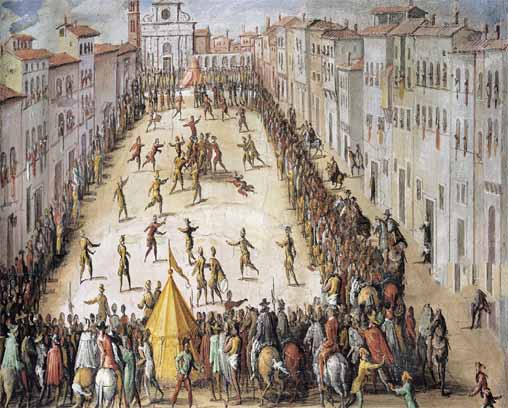
Painting by Jan Van der Straet. Image Source: wikipedia
Renaissance football, or calcio fiorentino, was a brutal spectacle. Teams representing different city districts would clash in massive matches with few rules. Punching, kicking, and choking were all allowed, and the violence was part of the entertainment. These matches were less about sport and more about displays of civic pride and raw physical power.
6. Artists dissected corpses to understand human anatomy.
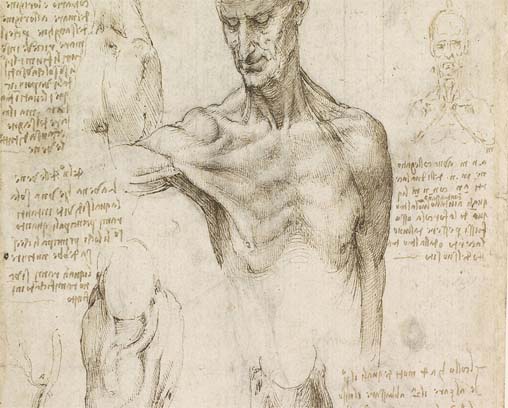
The Renaissance hunger for knowledge extended to the human body itself. Artists like Leonardo da Vinci were known to dissect corpses (sometimes obtained through illicit means) to study the structure of muscles and bones. This practice, while potentially unsettling to modern eyes, revolutionized artistic depictions of the human form, allowing for stunning realism in paintings and sculptures.
7. Wealthy people sometimes kept dwarfs as a status symbol.
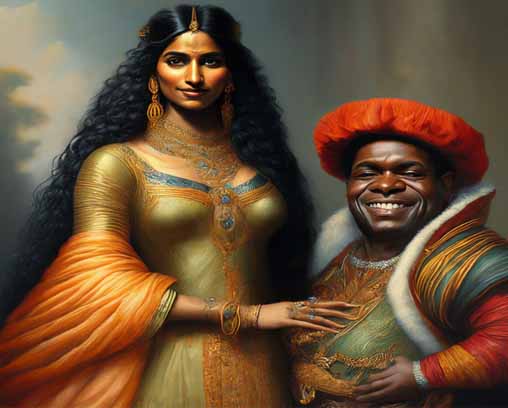
Sadly, dwarfs were sometimes treated as exotic possessions rather than individuals in Renaissance high society. Wealthy and powerful figures would keep dwarfs as attendants or entertainers, their presence a testament to the patron’s ability to command the unusual and rare. This practice reflects a deeply troubling dehumanization of those with physical differences.
8. Marriage was often a business arrangement rather than a love match.
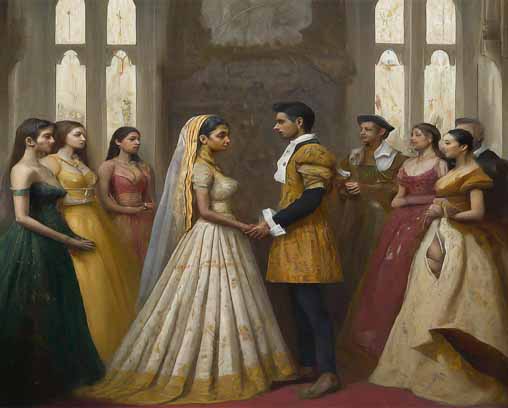
Romantic love was rarely the primary goal of marriage in the Renaissance. Instead, unions were strategic alliances between families, aimed at consolidating wealth, power, or social standing. Women, in particular, had little choice in their partners, and the marriage contract was more like a business transaction than a celebration of love.
Read More Top 15 Mind-Blowing Space Facts
9. Infant abandonment was a tragically common practice.

Harsh social conditions and a lack of reliable birth control meant that infant abandonment was a grim reality of the Renaissance. Desperate parents, often unwed mothers or families who couldn’t afford another child, would leave babies in churches, foundling hospitals, or simply abandon them to fate. This heartbreaking practice reflects the immense social pressures and limited options faced by many people of the time.
10. People used harsh methods like filing down teeth and acid for teeth whitening.
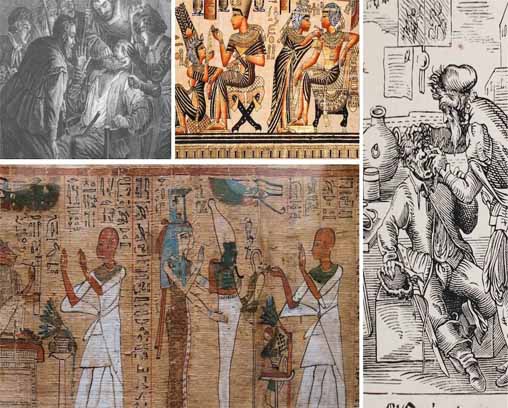
The Renaissance obsession with appearances extended to the mouth. In an age before modern dentistry, people resorted to desperate measures for a brighter smile. Some filed down their teeth to even them out, while others applied abrasive mixtures containing acids that would eat away at the enamel. These practices reveal the extreme value placed on a white smile, even if it came at the cost of long-term dental health.
11. Professional mourners could be hired to cry at funerals.

© CONSTANTINE MANOS/ MAGNUM PHOTOS
In the Renaissance, public displays of grief were expected, and for those who weren’t inclined to dramatic displays of sorrow, professional mourners were available for hire. These individuals, often women, specialized in weeping, wailing, and even tearing their hair to create an atmosphere of intense bereavement at funerals, especially for wealthy or important figures.
12. The Church sometimes put animals on trial for crimes.
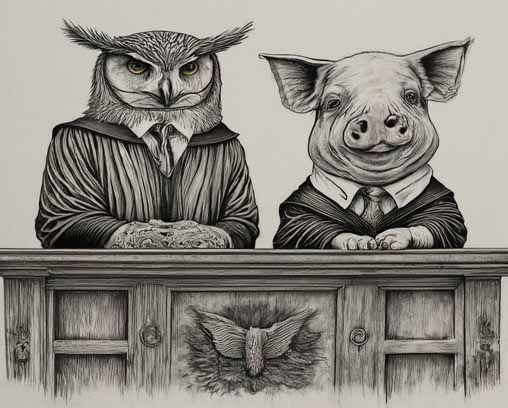
While it sounds bizarre today, there are records of animals being put on trial during the Renaissance, usually by the Church. Pigs accused of eating children, swarms of insects charged with destroying crops, or even individual rats summoned to court might face legal proceedings. These trials reflected a mixture of superstition, a desire to find a scapegoat, and a strong belief in the power of the Church to dispense justice even to the natural world.
Read More Top 15 Inventions That Changed the World
13. Surgery was often performed by barbers, not doctors.
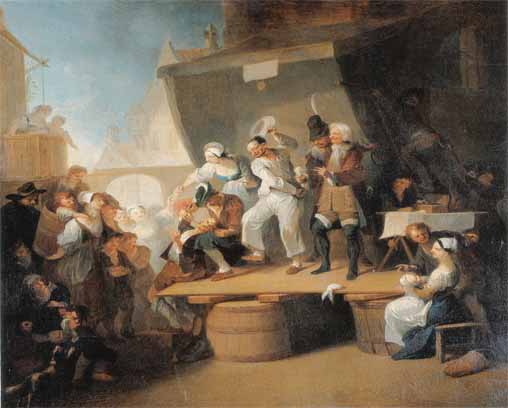
Before the development of modern medicine, the line between barbers and surgeons was thin. Barbers, already skilled with sharp instruments, often carried out basic medical procedures like bloodletting, wound dressing, tooth extractions, and even amputations. While some were genuinely skilled, the lack of formal medical training meant that seeking help from a barber-surgeon was an often painful and risky experience.
14. Belief in magic and astrology was widespread, even among intellectuals.

The Renaissance drive to understand the world didn’t stop at science. Many educated people also believed in magic, astrology, and alchemy (the attempt to transform base metals into gold). There was a sense that hidden forces shaped the universe, and intellectuals sought to decode them through rituals, astrological charts, and the pursuit of mystical knowledge.
15. Leonardo da Vinci designed a tank centuries before they were used in warfare.
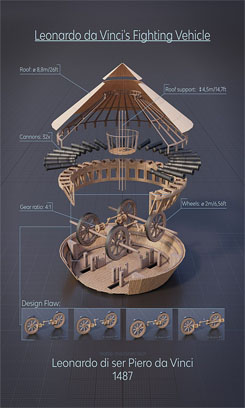
Image source: wikipedia
Leonardo da Vinci’s genius extended far beyond painting. He envisioned a circular armored vehicle, equipped with cannons – an early concept of the tank. While it was never constructed in his lifetime, his design demonstrates the incredible foresight of Renaissance thinkers, who were able to imagine technological marvels far ahead of their time.
Conclusion
The Renaissance shines as a period of immense human achievement. Yet, these surprising facts reveal a far more complex world, filled with contradictions, harsh realities, and beliefs that seem outlandish to our modern eyes. They remind us that even in an age of progress, the past remains a truly foreign country.
Top 15 Frequently Asked Questions about Renaissance Facts:
-
Besides lead, what other dangerous ingredients were in Renaissance cosmetics?
Lead was a primary culprit, but other potions were equally harmful. Mercury, a potent toxin, was used in blush. Nightshade (belladonna), a poisonous plant, was used to dilate pupils for a doe-eyed look. Corrosive acidic mixtures were applied for skin peeling, all with little understanding of their long-term damage to health.
-
Were there any positive uses for bloodletting, or was it always harmful?
While bloodletting is now discredited, Renaissance theory followed the concept of the four humors (blood, phlegm, black bile, yellow bile). Illness was believed to stem from an imbalance, and bloodletting aimed to restore it. In rare cases, like with a patient who had genuinely high iron levels, it might have coincidentally helped, but overall the practice was harmful and based on faulty medical understanding.
-
Did the belief in unicorns die out after the Renaissance?
Belief in unicorns persisted surprisingly long! Seafarers’ accounts of narwhals began to stir doubts in the 17th and 18th centuries. However, depictions of unicorns in art and stories continued. It wasn’t until the rise of modern zoology that the myth truly faded, though the unicorn’s enduring popularity in fantasy speaks to its continued hold on the imagination.
-
Why were forks seen as blasphemous?
Some religious figures argued that by eating with forks, humans were rejecting the natural tools (fingers) God had provided. There was a sense that forks were overly decadent, a symbol of luxury defying pious simplicity. Additionally, the fork’s spear-like prongs held negative connotations, potentially likened to the Devil’s pitchfork.
-
Were there any rules at all in Renaissance football, or was it complete chaos?
It was closer to organized chaos than a rule-free brawl. Some restrictions did exist: usually, weapons weren’t allowed on the field. Team sizes might be agreed upon beforehand, and there were designated starting and ending points. However, injuries were commonplace, and the main objective was less about scoring and more about physically dominating your rivals.
-
Where did artists get corpses for dissection if it was illegal?
Obtaining bodies was a murky area. Executed criminals were sometimes made available for anatomical study. Artists might resort to grave robbing, a dangerous practice given the strong taboos against disturbing the dead. Occasionally, there were ‘donations’ from those who wanted to see their bodies used for the advancement of knowledge, but this was relatively rare.
-
What was the social life of dwarfs like in Renaissance courts?
Their position was complex and contradictory. As possessions of a wealthy patron, they enjoyed material comforts but lacked true agency. Some dwarfs might form close bonds within the household, while others were isolated. While mocked for their appearance, they could gain influence as confidantes or entertainers. Ultimately, their lives were shaped by the whims of their employer, leaving them in a precarious social position.
-
How did arranged marriages work logistically?
Dowries (money the woman’s family paid) were crucial. Matchmakers might facilitate introductions. Women had limited say, with fathers or male relatives negotiating terms. The focus was on alliances between families: securing wealth, land, or forging political ties. Romantic love was a secondary concern at best, and primarily for the wealthy.
-
What options did poor families have besides abandoning infants?
Tragically, options were grim. Foundling hospitals took in some abandoned babies, but mortality rates were extremely high. A woman might place a child into service or apprenticeship from an early age. Desperate mothers sometimes turned to wet-nursing (breastfeeding other women’s infants), but low pay and separation from their own child made this difficult.
-
Did anyone’s teeth actually get whiter from these extreme methods, or did they just get damaged?
These methods offered temporary surface whitening at best. Acids stripped away enamel, exposing yellow dentin underneath. Filing made teeth uneven and more prone to decay. Long-term, these practices caused severe sensitivity, tooth loss, weakening them against even normal food. The quest for a white smile ultimately backfired in spectacular and painful ways.
-
Besides hired mourners, what were other strange Renaissance mourning customs?
Wearing black for extended periods was the most outward sign of mourning, especially for widows. Memorial jewelry containing the deceased’s hair was crafted into rings or brooches. Some cultures even had traditions of ritualized self-mutilation, with mourners cutting themselves or tearing their hair in extreme displays of grief that seem shocking to modern sensibilities.
-
What were some of the most common accusations against animals put on trial?
Animals typically faced charges relating to causing harm to humans or their livelihoods. Swarms of insects (like weevils or locusts) were often accused of destroying crops. Pigs that had attacked or killed children were brought before courts. Some trials bordered on the absurd, like rodents formally summoned for stealing food, as if they could comprehend the proceedings against them.
-
How did the role of barber-surgeons change over time?
The split between barbers and surgeons was gradual. As medical knowledge improved, surgeons sought to distinguish themselves with more formal training. Universities began teaching surgery alongside medicine. Guilds formed to regulate the medical profession, pushing out those without proper qualifications. While the term “barber-surgeon” lingered, the practices increasingly diverged.
-
Were there any women who practiced magic or alchemy in the Renaissance?
While often persecuted as ‘witches’, some women were respected for their knowledge of herbal remedies and healing, blurring the line between medicine and ‘folk magic’. A few women, usually from privileged backgrounds, studied alchemy alongside men. They faced added scrutiny, needing to overcome the prejudice that scholarly pursuits were unsuitable for women.
-
Is there a real-life model for Leonardo da Vinci’s tank design?
Da Vinci was a brilliant innovator, but his tank wasn’t entirely original. He likely drew inspiration from earlier war machines like armored siege towers. He also made significant improvements, envisioning a circular shape for deflecting fire and incorporating numerous cannons. His genius lies in refining existing concepts and demonstrating remarkable foresight into the future of warfare.


